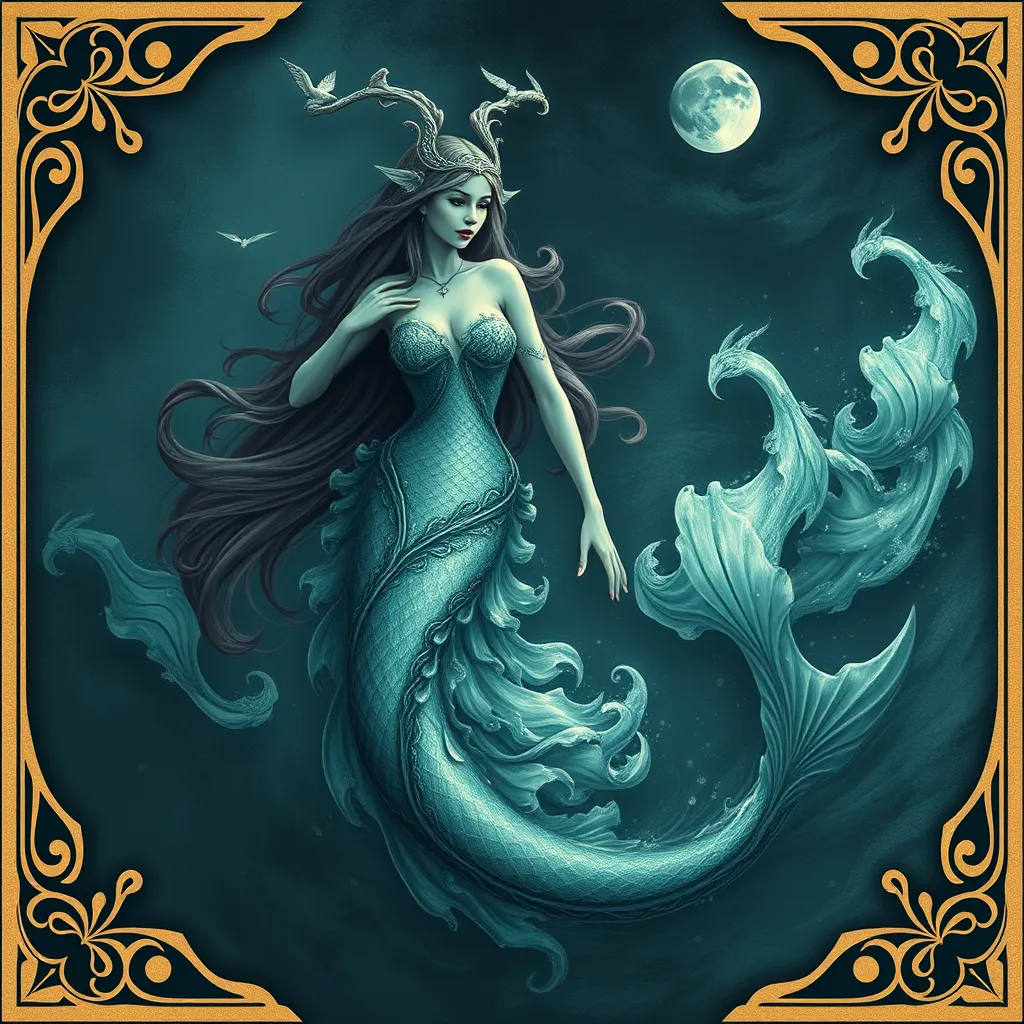Sea Witch or Sea Nymph: Understanding the Dual Nature of Mermaid Lore
I. Introduction
Mermaid mythology has captivated human imagination for centuries, weaving rich tapestries of stories that vary across cultures and epochs. These enchanting beings, often depicted as half-woman and half-fish, embody a dual nature that oscillates between the benevolent sea nymph and the malevolent sea witch. Understanding this duality is crucial for those who seek to explore the depths of mermaid lore.
This article aims to delve into the historical origins, characteristics, symbolism, and modern reinterpretations of mermaid mythology, highlighting the importance of the sea witch and sea nymph archetypes.
II. Historical Origins of Mermaid Myths
Mermaid myths trace back to ancient civilizations, where they were often revered or feared. The earliest accounts can be found in:
- Assyrian mythology, featuring the goddess Atargatis, who transformed into a fish.
- The Babylonian Epic of Gilgamesh, which includes tales of fish-women.
As cultures evolved, so did their interpretations of these aquatic beings:
- In ancient Greece, mermaids were often synonymous with the Sirens, who lured sailors to their doom with enchanting songs.
- The Nereids of Roman mythology were depicted as gentle sea nymphs, offering assistance and protection to sailors.
Over the ages, mermaid imagery has transformed, reflecting societal values and fears. The dual nature of mermaids—both nurturing and dangerous—has persisted, illustrating the complexities of human relationships with the sea.
III. Characteristics of Sea Witches
Sea witches occupy a unique niche in mermaid lore. Defined as powerful sorceresses who harness the ocean’s energy, they often embody the darker aspects of femininity.
The role of sea witches in folklore includes:
- Manipulating the elements and controlling the tides.
- Casting spells to achieve their desires, often at the expense of others.
- Serving as cautionary figures in tales of hubris and betrayal.
Prominent sea witch figures include:
- Ursula from Disney’s “The Little Mermaid,” who embodies manipulation and deceit.
- The sea witch from Hans Christian Andersen’s original “The Little Mermaid,” who represents sacrifice and desperation.
IV. Characteristics of Sea Nymphs
In contrast to sea witches, sea nymphs are often depicted as benevolent and nurturing. They play crucial roles in folklore as guardians of the ocean and its creatures.
The role of sea nymphs includes:
- Providing guidance and assistance to sailors and lost souls.
- Symbolizing beauty, love, and harmony within nature.
- Protecting marine life and maintaining the balance of the ocean ecosystem.
Famous sea nymph figures include:
- The Nereids, daughters of Nereus in Greek mythology, known for their kindness and assistance to sailors.
- Merrow from Irish folklore, who are often portrayed as beautiful and helpful.
V. The Symbolism of Duality in Mermaid Lore
The dual nature of mermaids—sea witches versus sea nymphs—serves as a rich metaphor for the complexities of good and evil, reflecting the multifaceted nature of humanity.
Key aspects of this symbolism include:
- The interplay of attraction and danger in relationships.
- The representation of female power, both nurturing and destructive.
- How these archetypes mirror societal values and fears surrounding femininity.
This duality has influenced modern interpretations of mermaids, leading to a more nuanced understanding of their symbolism in art, literature, and popular culture.
VI. The Influence of Popular Culture on Mermaid Archetypes
In contemporary media, mermaids have been portrayed in various ways that reflect societal changes and evolving perceptions:
- Films like “The Little Mermaid” present the sea nymph as a romantic figure, while also exploring themes of sacrifice and longing.
- On the other hand, movies like “Hocus Pocus” portray sea witches in a comedic yet powerful light, emphasizing their magical abilities and independence.
Case studies illustrate these shifts:
- “The Little Mermaid” focuses on Ariel’s journey from a sea nymph to a human, symbolizing desire and transformation.
- “Hocus Pocus” showcases a more humorous take on witches, inviting viewers to appreciate their strength and flaws.
VII. The Modern Mermaids: Reinterpretations and Feminism
Modern movements have begun to reshape the narratives surrounding mermaids, integrating themes of feminism and identity.
Key aspects include:
- Reinterpreting mermaids as symbols of female empowerment, resilience, and community.
- Exploring the intersectionality of race, gender, and sexuality within mermaid narratives.
- Fostering a sense of identity and belonging among those who resonate with the mermaid archetype.
These contemporary interpretations invite audiences to explore deeper meanings and personal connections to mermaids, moving beyond traditional binaries of good and evil.
VIII. Conclusion
The dual nature of mermaid lore, represented through the figures of sea witches and sea nymphs, reflects the complexities of human experience, femininity, and societal values. Understanding these archetypes sheds light on our relationships with nature and each other.
As we continue to explore mermaid mythology across various cultures, we uncover layers of meaning that resonate with our contemporary lives, inviting further inquiry into these timeless tales.




